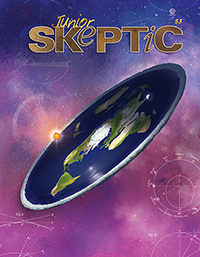In this week’s eSkeptic:
SEATS AVAILABLE AT LIVE EVENT THIS SUNDAY
SCIENCE SALON # 20
Dr. Carol Tavris talks with Dr. Michael Shermer about his new book Heavens on Earth: The Scientific Search for the Afterlife, Immortality, and Utopia
In his most ambitious work yet—a scientific exploration into humanity’s obsession with the afterlife and quest for immortality—bestselling author and skeptic, Michael Shermer, sets out to discover what drives humans’ belief in life after death, focusing on recent scientific attempts to achieve immortality along with utopian attempts to create heaven on earth.
For millennia, religions have concocted numerous manifestations of heaven and the afterlife, and though no one has ever returned from such a place to report what it is really like—or that it even exists—today science and technology are being used to try to make it happen in our lifetime. From radical life extension to cryonic suspension to mind uploading, Shermer considers how realistic these attempts are from a proper skeptical perspective.
Heavens on Earth concludes with an uplifting paean to purpose and progress and how we can live well in the here-and-now, whether or not there is a hereafter.
Reserve your seat(s) online or by calling 1-626-794-3119. Online reservation closes Sunday, March 25, 2017 at 11am PDT.
Check Us Out On YouTube.
Science Salons • Michael Shermer
Skeptic Presents • All Videos
Show Your Support
Subscribe to our YouTube Channel and get notified instantly when we post new content! Do you like what you see? Show your support for our work. Your ongoing patronage is vital to our organization’s mission.
Is the Earth Flat?
Recent news stories,1 celebrity endorsements, and Google search trends2 have highlighted an apparently growing conspiracy theory belief that the Earth is not a globe, but instead a flat disc. According to believers, government forces promote a completely fictitious model of the cosmos in order to conceal the true nature of the Earth. Are these claims true?
No. The Earth is Round
The evidence for a spherical Earth is overwhelming.3 Most obviously, there are many thousands of images and videos of the Earth from space, including a continually changing live stream view of the globe from the International Space Station—not to mention all the astronauts who have personally seen the Earth from orbit. Flat Earthers claim that all images of the globe are fraudulent inventions, and all testimony from astronauts is false. It is unreasonable to dismiss all of the evidence from the entire history of space exploration, especially when there is zero evidence for a decades-long “globularist” conspiracy. However, we do not need to rely on evidence from modern space agencies to confirm the roundness of the Earth for ourselves.

Portions of this article appeared previously in Daniel Loxton’s detailed history of the Flat Earth movement in Junior Skeptic #53, bound within Skeptic magazine 19.4 (2014).
The globe has been clearly understood for thousands of years. Indeed, this was one of the first cosmic facts to be worked out correctly by ancient people because evidence of a spherical Earth is visible to the naked eye.
By the time of the philosopher Socrates and his student Plato, many Greeks understood that the Earth could only be a sphere. Sailors would have noticed that the sails of approaching ships appeared before the hulls of the ships became visible because the surface of the sea is slightly curved, like the surface of an enormous ball.4 When you sail toward a ship, island, or lighthouse, their tallest points are the first thing to peek up over the curve of the horizon.
Plato’s student Aristotle offered further “evidence of the senses” to support his own conclusion that the Earth “must necessarily be spherical.” First, there was the evidence of lunar eclipses. When the Moon passes through the shadow of the Earth, that shadow is always the circular shadow of a sphere. Also, Aristotle argued, “our observations of the stars” make it clear “not only that the earth is circular, but also that it is a circle of no great size.” He pointed out that “quite a small change of position to south or north” significantly changes “the stars which are overhead, and the stars seen are different, as one moves northward or southward.” Just as ships can be hidden from view by the curvature of the horizon, so too can the stars.5
The debate about the shape of the Earth has been settled for over two thousand years. An ancient scholar named Eratosthenes—the head of the famous library of Alexandria in Egypt—even correctly approximated the circumference of the Earth using experimental measurements of shadows in two cities and some geometry.6
Despite modern legends about Medieval backwardness, there never was a time when educated people went back to thinking the Earth was flat. Once discovered, the true shape of the globe was too simple and useful a fact to be forgotten. Sailors were reminded of the planet’s roundness every time they climbed a mast to see further over the horizon or looked to the stars to determine their position. By the time of Columbus, his crew and even his critics understood that our world is a globe.7 It had been an established fact for centuries. For example, here’s a passage from the popular astronomy textbook On the Sphere of the World, published over 250 years before Columbus sailed: […]













